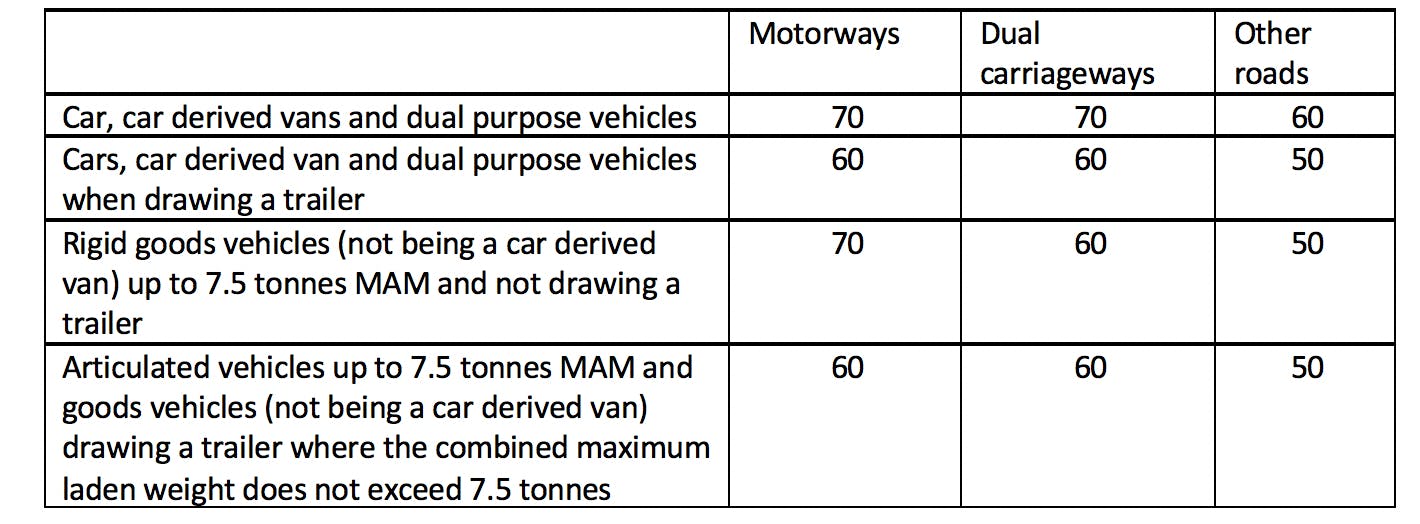Why is that Van in the Outside Lane?!
It is surprising the number of vans that overtake on a dual carriageway when you are travelling in your car on the inside lane at 70 mph. All van operators should be aware that van speed limits in the UK are not always the same as they are for cars. Making van speed limits even more confusing, different classes of van are subject to different rules. Do you know the speed classification for car-derived and dual-purpose vehicles compared to 3.5-tonne panel vans, for example?
What is the speed limit in a van?
If you drive lots of different types of light commercial vehicle (LCV), and want to be sure you stay on the right side of the law, this is the basic rule of thumb for van speed limits:
Built-up areas (such as towns and cities): 30mph – the same as a car
Single carriageways: 50mph – 10mph less than a car
Dual carriageways: 60mph – 10mph less than a car
Motorways: 70mph – the same as a car
These limits are obviously subject to further restrictions, according to the posted speed limit signs – so you may find dual carriageways with 40mph limits, 20mph zones in towns, and so on. These speed limits apply to all vans (large and small).
Technically those limits apply to all goods vehicles up to 7.5 tonnes GVW, although European law means commercial vehicles between 3.5t and 7.5t GVW should be electronically restricted to 56mph anyway.
Car derived vans and Dual-Purpose Vehicles are the same as your common garden motor vehicle, so don’t be surprised if you see CDVs and DPVs dashing past you on a Sunday afternoon.
Here’s a table to make it easier:

See and be identifiable
A slightly different theme for this part of the blog is a reminder to pass on to all of your drivers to stay safe in difficult and wintery conditions.
During the war, army drivers who drove armoured vehicles were used to looking through letterbox size holes in the armour plating to try and see where they were going. Such previous experience is unlikely to amount to a defence if drivers find themselves in Court for Careless driving.
Remind your drivers to leave time in the morning to clear the windscreen and lights so that they have full visibility and a clear path ahead. The DVSA is very keen to ensure all drivers have a good view to the front of their vehicles.
Another issue during the winter months is the road conditions and more particularly the mud and salt lifted from the road and usually deposited in the back of your vehicle. Hopefully you all have rear window washers and wipers to clear the rear screen but what about the rear number plate? This is something that is regularly covered in the detritus from the surface of the road and makes the registration number of your vehicle unreadable which can upset the enforcement bodies. The fine for not being able to determine the details of a number plate is up to £1,000. Be aware.
Images credit movie-cards / copyright Characteristic Ltd